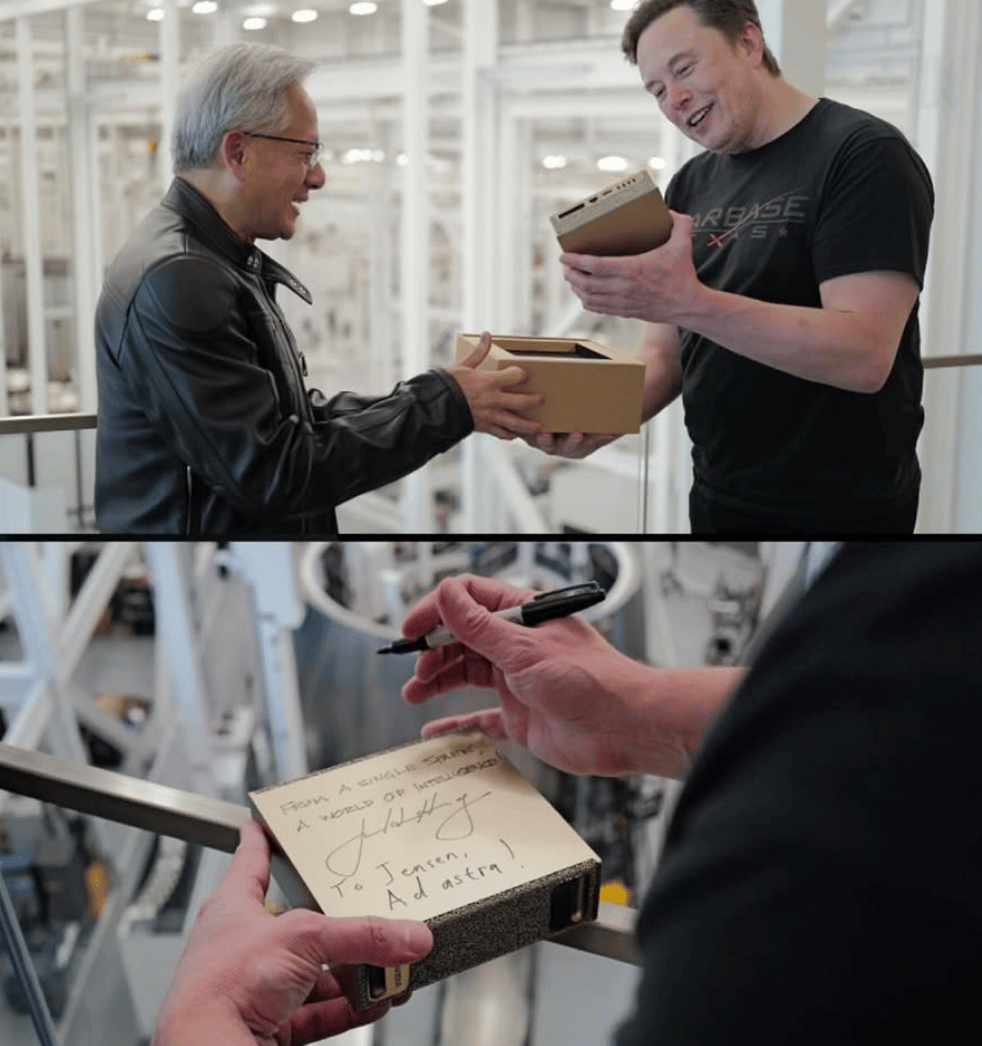Learn AI in 5 minutes a day
This is the easiest way for a busy person wanting to learn AI in as little time as possible:
Sign up for The Rundown AI newsletter
They send you 5-minute email updates on the latest AI news and how to use it
You learn how to become 2x more productive by leveraging AI
The AI Supercomputer That Fits in Your Backpack
Jensen Huang just handed Elon Musk a 2.6-pound box that contains more computing power than a rack-mounted data center from nine years ago. Hours before SpaceX's Starship Flight 11 launch, NVIDIA's CEO personally delivered the DGX Spark—and the symbolism is not subtle.
Here's why this matters: In 2016, Huang delivered the first DGX-1 supercomputer to OpenAI, where Musk was co-founder. That beast weighed 134 pounds, consumed 3,200 watts, cost $129,000, and helped birth ChatGPT. The DGX Spark? Six times more powerful. Weighs less than a laptop. Runs on a 240-watt power supply. Costs $3,999.
Read those numbers again. We just compressed a data center into something you can throw in a backpack.

The specs are genuinely insane: 128GB of unified memory, 1 petaflop of AI performance, and the ability to run models with up to 200 billion parameters—locally, without touching the cloud. That unified memory architecture? It means no more bottleneck shuffling data between CPU and GPU. Everything just talks at 900 GB/s through NVLink-C2C. For context, that's five times faster than PCIe Gen5.
But here's what really changes: until now, serious AI development meant either buying $50,000 GPU clusters or hemorrhaging money on cloud computing fees. The DGX Spark blows that model apart. For four grand, you get supercomputer-class capabilities on your desk. Your data never leaves your building. Zero marginal costs after purchase. Zero latency. Complete independence from internet connectivity.
This is NVIDIA's "MacBook moment" for AI hardware—the point where serious development capabilities become truly portable and personal. Universities can equip individual students with this instead of rationing cloud credits. Startups can iterate on proprietary models without exposing code to cloud providers. Regulated industries can develop AI on sensitive data without compliance nightmares.
The thing is, Huang delivered a DGX Spark to Sam Altman too, separately recreating that 2016 moment with both former OpenAI co-founders—who are now locked in legal battles with each other. The unified team that launched the AI revolution? Fractured. But the technology? Exponentially more powerful and democratized.
We're watching Moore's Law evolve beyond transistor density into something weirder and faster. AI compute has been doubling every six months for a decade—four times faster than traditional Moore's Law. The DGX Spark embodies this: not just smaller transistors, but architectural innovation, chiplet designs, specialized interconnects.
The AI revolution just became desk-portable. What happens next is anyone's guess.

